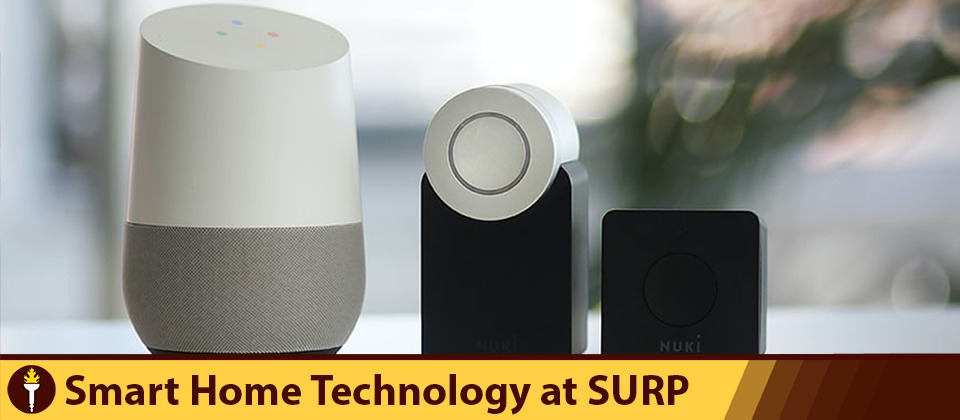Smart Home Technology at SURP
Smart Home Technology at SURP
Smart Home Technology at SURP
The SURP Program has no shortage of new ideas and developments to show off. Students from many different parts of Rowan came together to demonstrate the culmination of their work at the Poster Session. Last time, the work in question was the anomaly detection projects by Owen Anderson and Nirav Patel. Today, there is another Computer Science project from the Poster Session worth shining a spotlight on. That project is the research into smart home energy optimization, presented by Dylan Perry.
First, let’s establish the basics. What is a smart home, exactly? Well, it’s certainly no secret that the technology we use in our daily lives is rapidly advancing. Many people have lights, heating systems, and other devices in their homes that can be managed or controlled at the tap of a button from their smartphones. A smart home is essentially any household that makes use of such technology. With the rise of smart fridges, smart thermostats, and many other “smart” inventions, it’s only natural that people will be hard at work to further improve this technology.
This is where Dylan’s research project comes into play. Through the SURP Program, Dylan has been researching smart home technology, specifically in an effort to optimize its energy usage. The basic idea was to achieve the same level of comfort without relying as much on user input, as well as cutting down on energy costs. If you could train a machine to manage these systems in an energy efficient way, it would be a huge step forward in making smart home technology better for everyone.
This is achieved through something called reinforcement learning. As Dylan explained, reinforcement learning is a form of machine learning that revolves around training the AI through trial and error. Basically, the machine explores various possible outcomes for different scenarios so that it can find and act upon the desired results. However, as a system gets more and more complex, reinforcement learning gets less and less efficient. Inevitably, there will be scenarios where it would be wasteful to explore every possible outcome. When it comes to a scenario like that, Deep Reinforcement Learning is the solution.
Deep Reinforcement Learning is a type of reinforcement learning that is more efficient for complex systems. Through this model of machine learning, the machine is able to generalize groups of unexplored outcomes so that it can reach the desired result without needing to explore every possible avenue. Using this model, it is possible to train machines for complex systems at a relatively fast pace.
But what does this mean for smart homes? Well, think about how much technology you use on a daily basis. In just one day, you might turn your lights on, set your thermostat, watch TV, and interact with many other pieces of technology. Having some kind of system that could help you manage all that technology would undoubtedly be very convenient. However, training a machine for every possible scenario in your home would be incredibly inefficient. Deep Reinforcement Learning acts as a way to streamline the machine learning process, allowing the machine to quickly home in on your specific needs and habits. This makes it a lot more efficient (both time-wise and energy-wise) for the technology to be trained for practical use.
Once this model of machine learning is applied to real households, daily life could become much more convenient for lots of people, all without sacrificing much in terms of energy costs. Beyond that, Dylan also suggested that this sort of technology could see applications outside the home as well, such as improving infrastructure in large cities. With the growing influence of electronics on our daily lives, innovations like this only become more useful by the day.
Written by Cole Goetz | Posted 2021.09.29
